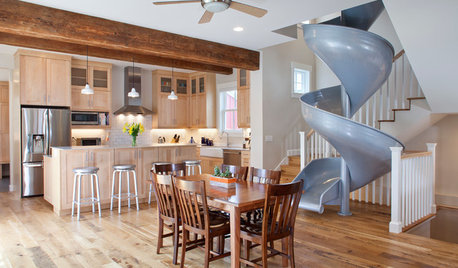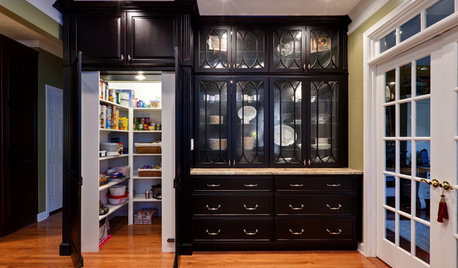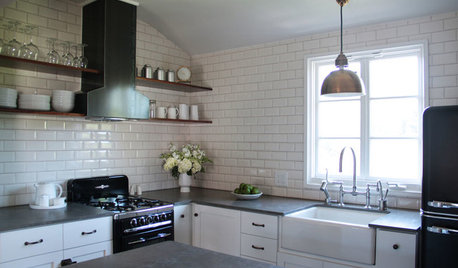Is 6 in. vent big enough for 36 in. range top ?
johninsocal
11 years ago
Related Stories

KITCHEN DESIGNTrending Now: 25 Kitchen Photos Houzzers Can’t Get Enough Of
Use the kitchens that have been added to the most ideabooks in the last few months to inspire your dream project
Full Story
KITCHEN COUNTERTOPSWhen One Countertop Material Isn’t Enough
Combining counter materials in the kitchen can create a dramatic look, improve function and stretch the budget
Full Story
REMODELING GUIDESAre You Gutsy Enough to Paint Your Floor White?
Sleek and glossy or softened by wear, white floors charm
Full Story
MOST POPULARA Fine Mess: How to Have a Clean-Enough Home Over Summer Break
Don't have an 'I'd rather be cleaning' bumper sticker? To keep your home bearably tidy when the kids are around more, try these strategies
Full Story
KITCHEN DESIGNA Cook’s 6 Tips for Buying Kitchen Appliances
An avid home chef answers tricky questions about choosing the right oven, stovetop, vent hood and more
Full Story
DINING ROOMSNew This Week: 6 Modern Dining Zones in Homes Big and Small
Look to splashy accent walls, right-sized tables and indoor slides to make the most of your open layout
Full Story
KITCHEN CABINETSTop 6 Hardware Styles for Raised-Panel Kitchen Cabinets
Whether you're going for a furniture feel or industrial contrast in your kitchen, these pulls and knobs will put you on the right track
Full Story
HOUSEKEEPINGHow to Clean Your Range and Oven
Experts serve up advice on caring for these kitchen appliances, which work extra hard during the holidays
Full Story
KITCHEN DESIGNHow to Find the Right Range for Your Kitchen
Range style is mostly a matter of personal taste. This full course of possibilities can help you find the right appliance to match yours
Full Story
KITCHEN DESIGN10 Big Space-Saving Ideas for Small Kitchens
Feeling burned over a small cooking space? These features and strategies can help prevent kitchen meltdowns
Full Story







mydreamhome
weissman
Related Professionals
El Sobrante Kitchen & Bathroom Designers · Highland Park Kitchen & Bathroom Designers · Manchester Kitchen & Bathroom Designers · Montebello Kitchen & Bathroom Designers · Moraga Kitchen & Bathroom Designers · Olympia Heights Kitchen & Bathroom Designers · Biloxi Kitchen & Bathroom Remodelers · Eagle Kitchen & Bathroom Remodelers · Londonderry Kitchen & Bathroom Remodelers · Mooresville Kitchen & Bathroom Remodelers · Niles Kitchen & Bathroom Remodelers · Warren Kitchen & Bathroom Remodelers · Eufaula Kitchen & Bathroom Remodelers · Graham Cabinets & Cabinetry · Murray Cabinets & Cabinetrycooksnsews
deeageaux
jwvideo
johninsocalOriginal Author
kaseki
davidro1
buffalotina
johninsocalOriginal Author
jwvideo
attofarad
davidro1
Nateman72